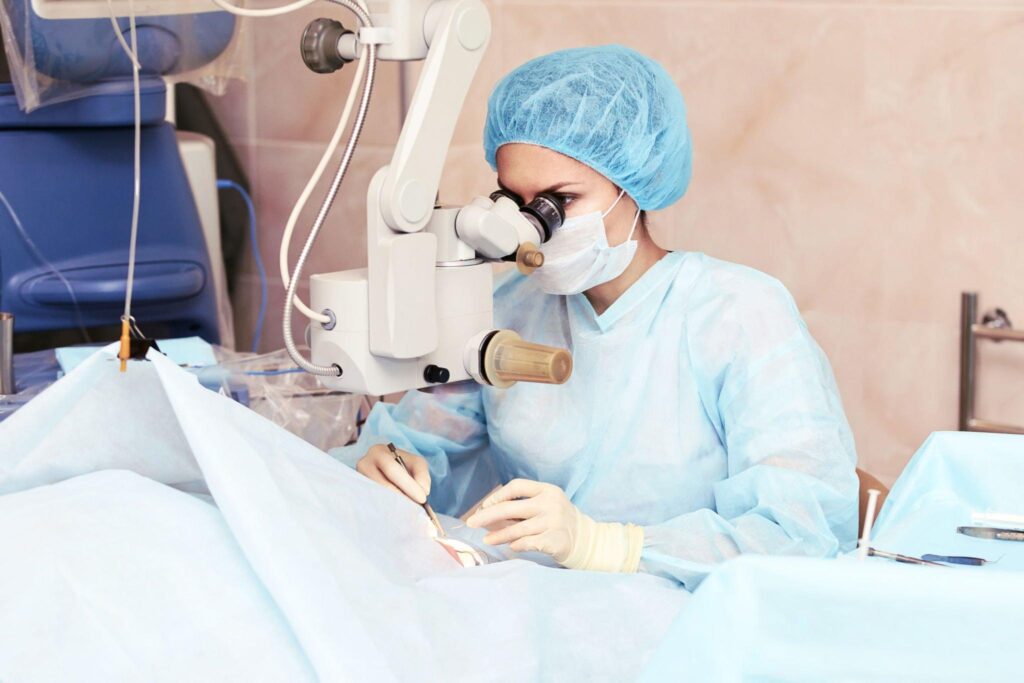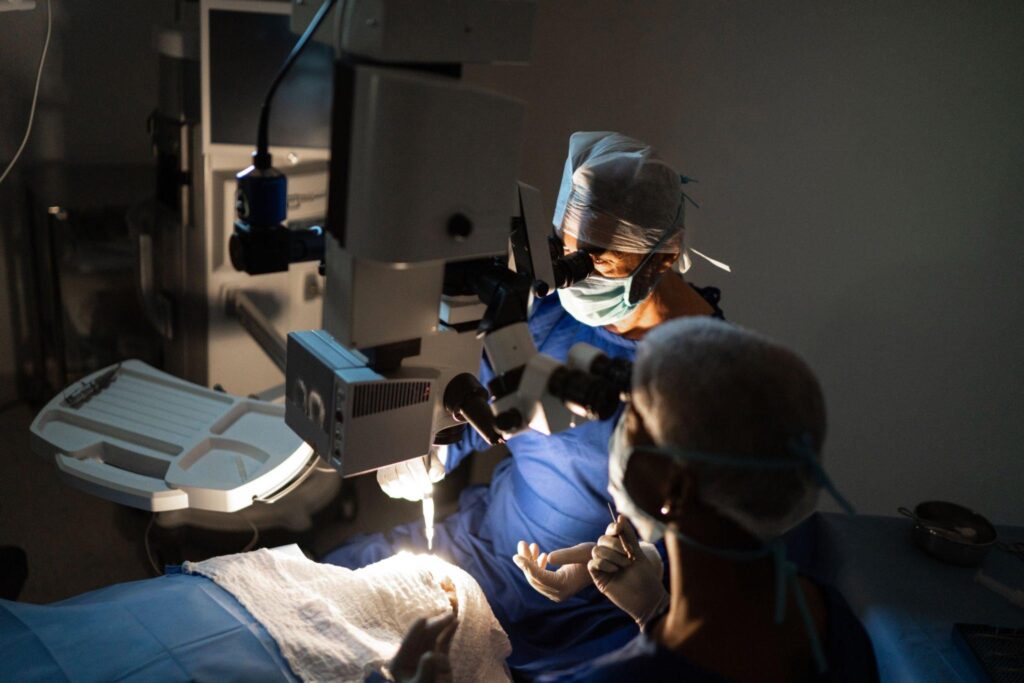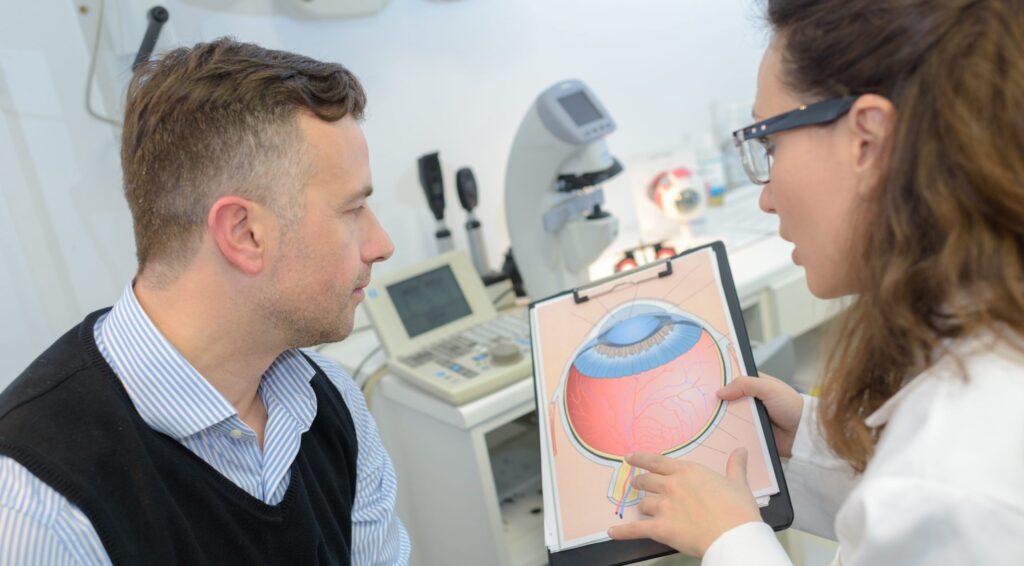Glaucoma is a serious eye condition that affects millions of people worldwide. It is a leading cause of blindness and can cause irreversible damage to the optic nerve if left untreated. While there are several treatment options available for glaucoma, surgery is often necessary to effectively manage the condition. Understanding the different types of glaucoma surgery and their benefits and risks is crucial in making informed decisions about your eye health. In this article, we will explore the various options for glaucoma surgery and provide valuable insights to help you understand your choices.
Understanding Glaucoma: A Brief Overview
Before delving into the details of glaucoma test for eyes and surgery, it is essential to have a basic understanding of what glaucoma is and why it is a cause for concern. Glaucoma is a group of eye conditions characterized by increased pressure within the eye, known as intraocular pressure (IOP). This elevated pressure can damage the optic nerve, which is responsible for transmitting visual information from the eye to the brain.
Glaucoma can be classified into different types, including primary open-angle glaucoma (POAG), angle-closure glaucoma, normal-tension glaucoma, and secondary glaucoma. Each type has its own unique characteristics and may require specific treatment approaches. However, the primary goal of any glaucoma treatment is to reduce intraocular pressure and prevent further damage to the optic nerve.
What is Glaucoma?
Glaucoma is a chronic and progressive eye disease that damages the optic nerve, leading to vision loss and blindness if left untreated. It is often associated with increased intraocular pressure, which can result from the accumulation of fluid in the eye. This elevated pressure puts excessive stress on the optic nerve, gradually causing it to deteriorate and impairing the transmission of visual signals.

Glaucoma usually develops slowly and without noticeable symptoms in its early stages, earning it the moniker “the silent thief of sight.” As the disease progresses, however, individuals may experience symptoms such as blurred vision, eye pain, redness, and loss of peripheral vision. Regular eye exams are crucial for early detection and prompt treatment of glaucoma.
The Importance of Early Detection
Early detection plays a vital role in preventing vision loss and managing glaucoma effectively. Since glaucoma typically progresses slowly and asymptomatic in its early stages, routine eye exams are necessary to diagnose the condition early on. During these exams, eye care professionals conduct various tests to assess your intraocular pressure, examine the optic nerve, and evaluate your visual fields.
By detecting glaucoma early, treatment can be initiated promptly to control the intraocular pressure and prevent further damage to the optic nerve. Regular monitoring of your eye health and adherence to prescribed treatment plans are necessary to effectively manage glaucoma and preserve your vision.
It is worth noting that certain factors can increase the risk of developing glaucoma. These include age, family history of glaucoma, certain medical conditions such as diabetes and high blood pressure, and the use of certain medications. Additionally, individuals of African, Hispanic, or Asian descent are at a higher risk of developing glaucoma compared to individuals of Caucasian descent.
Furthermore, while glaucoma is commonly associated with increased intraocular pressure, there are cases where individuals develop glaucoma even with normal or low intraocular pressure. This condition, known as normal-tension glaucoma, poses a unique challenge in diagnosis and treatment. It highlights the importance of comprehensive eye exams and the need for a thorough evaluation of various factors beyond intraocular pressure.
The Role of Surgery in Glaucoma Treatment
While medications and eye drops are the primary treatment methods for glaucoma, surgery may be recommended in certain cases. Glaucoma surgery aims to lower the intraocular pressure by improving the drainage of fluid from the eye or by reducing the production of aqueous humor, the clear fluid that fills the front part of the eye.
It is important to note that surgery is not typically the first line of treatment for glaucoma. It is usually reserved for individuals who have not achieved sufficient intraocular pressure control with medications and have experienced progression of the disease. Your eye care professional will consider various factors, such as the type and severity of glaucoma, your overall eye health, and your specific circumstances when determining the need for surgical intervention.
When is Surgery Recommended?
Surgery for glaucoma may be recommended in several scenarios, including:
- If medications or eye drops fail to adequately control intraocular pressure
- If the optic nerve damage continues to progress despite medication use
- If other treatment options have been exhausted or are deemed unsuitable for your specific case
The decision to undergo glaucoma surgery is a collaborative one between you and your eye care professional. They will carefully evaluate your individual circumstances and provide you with the necessary information to help you make an informed choice about your treatment options.

Benefits and Risks of Glaucoma Surgery
Like any surgical procedure, glaucoma surgery involves both benefits and risks. The potential benefits of glaucoma surgery include:
- Reduced intraocular pressure
- Slowed or halted progression of optic nerve damage
- Improved control of glaucoma
- Reduced dependence on medications and eye drops
However, it is important to be aware of the risks associated with glaucoma surgery, which can include:
- Infection
- Bleeding
- Swelling
- Worsening of vision
- Formation of scar tissue
Your eye care professional will discuss these risks with you in detail and provide personalized recommendations based on your unique circumstances and medical history.
Different Types of Glaucoma Surgeries
There are several surgical options available for the treatment of glaucoma, each with its own advantages and considerations. The choice of surgery will depend on various factors, including the type and severity of glaucoma, your eye health, and the degree of intraocular pressure reduction required. Let’s explore some of the most common types of glaucoma surgeries:
Trabeculectomy: The Gold Standard
Trabeculectomy is considered the gold standard surgical procedure for glaucoma. It involves creating a tiny drainage hole in the sclera, the white part of the eye, to allow excess fluid to drain out of the eye. This helps lower the intraocular pressure and prevent further damage to the optic nerve. During the procedure, a tiny piece of tissue is removed to create a new drainage channel, forming a fluid-filled space underneath the conjunctiva, the clear membrane covering the white part of the eye.
Trabeculectomy is typically performed under local anesthesia, and the surgery success rate is generally high. However, it is important to note that trabeculectomy carries certain risks, such as infection, bleeding, low intraocular pressure, and the formation of scar tissue. Regular follow-up visits with your eye care professional are necessary to monitor the success of the procedure and address any concerns or complications that may arise.
Laser Trabeculoplasty: A Less Invasive Option
Laser trabeculoplasty is a less invasive alternative to traditional glaucoma surgery. It is typically recommended for individuals with open-angle glaucoma, where there is blockage or clogging of the drainage channels in the eye. During the procedure, a laser is used to apply energy to the drainage angle, stimulating the tissue to improve fluid flow and lower intraocular pressure.
Laser trabeculoplasty is typically performed as an outpatient procedure, meaning you can go home the same day. It requires only topical anesthesia and generally involves minimal discomfort or recovery time. However, the effects of laser trabeculoplasty may not be permanent, and additional treatments or medications may be necessary to maintain optimal intraocular pressure control.
Tube Shunt Surgery: For Advanced Cases
Tube shunt surgery, also known as glaucoma drainage implant surgery, is typically reserved for individuals with more advanced or difficult-to-treat glaucoma. It involves the placement of a small tube (shunt) in the eye to bypass the blocked or damaged drainage channels, allowing excess fluid to drain out and lower the intraocular pressure.
Tube shunt surgery is usually performed under local anesthesia or general anesthesia, depending on individual circumstances. While it can effectively lower intraocular pressure, there is a risk of complications such as tube blockage or migration, scarring around the tube, and the need for additional surgeries to adjust the shunt.

Preparing for Glaucoma Surgery
Once you and your eye care professional have decided that glaucoma surgery is the appropriate treatment option for you, there are several steps involved in preparing for the procedure. These include:
Pre-Surgery Consultation
Prior to the surgery, you will have a consultation with your eye care professional to discuss the details of the procedure, address any concerns or questions you may have, and ensure that you are medically fit for surgery. This consultation may involve additional tests or evaluations to assess your eye health and overall well-being.
What to Expect on the Day of Surgery
On the day of surgery, it is important to follow any specific instructions provided by your eye care professional. These may include fasting before the procedure, stopping certain medications, and arranging transportation to and from the surgical facility. Most glaucoma surgeries are performed on an outpatient basis, meaning you can go home on the same day once the effects of anesthesia wear off and you are deemed stable.
The surgery itself will be performed by a trained eye surgeon in a sterile operating room. You will be made comfortable and given anesthesia to ensure your comfort throughout the procedure. The surgeon will explain the surgical steps and answer any last-minute questions you may have.
Post-Surgery Care and Recovery
After glaucoma surgery, proper post-operative care and follow-up are crucial to ensure optimal healing and a successful outcome. The specific instructions and timeline for your recovery will depend on the type of surgery performed and your individual circumstances. Here are some general guidelines:
Immediate Aftercare
Following glaucoma surgery, you will likely experience some discomfort, redness, and blurred vision for a few days. It is important to refrain from rubbing your eyes, bending over, or participating in strenuous activities during this period to allow for proper healing. Your eye care professional may prescribe antibiotic or anti-inflammatory eye drops to prevent infection and reduce inflammation.
During the immediate post-operative period, it is also crucial to attend all scheduled follow-up appointments as advised by your eye care professional. These visits will allow them to monitor your progress, assess the success of the surgery, and address any concerns or complications that may arise.
Long-Term Management and Follow-Up
While glaucoma surgery can effectively lower intraocular pressure and slow the progression of the disease, it is important to remember that glaucoma is a chronic condition that requires long-term management. Ongoing follow-up visits with your eye care professional are necessary to monitor your eye health, assess the success of the surgery, and make any necessary adjustments to your treatment plan.
Additionally, it is important to continue taking any prescribed medications or using eye drops as directed by your eye care professional, even if your intraocular pressure seems well-controlled. Regular monitoring and adherence to your treatment plan are key in preventing further damage to the optic nerve and preserving your vision.
Conclusion
Glaucoma surgery plays a significant role in effectively managing the condition and preserving vision. Understanding the different types of glaucoma surgeries and their benefits and risks is crucial in making informed decisions about your treatment options. By working closely with your eye care professional and adhering to recommended post-operative care and follow-up, you can optimize your chances of achieving optimal intraocular pressure control and protecting your vision for years to come.
Related: Managing Glaucoma and Exploring Surgical Treatment Options

